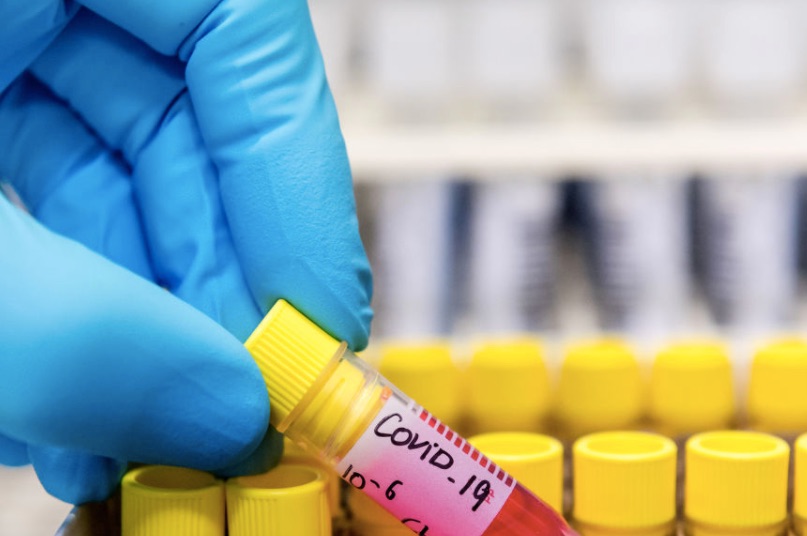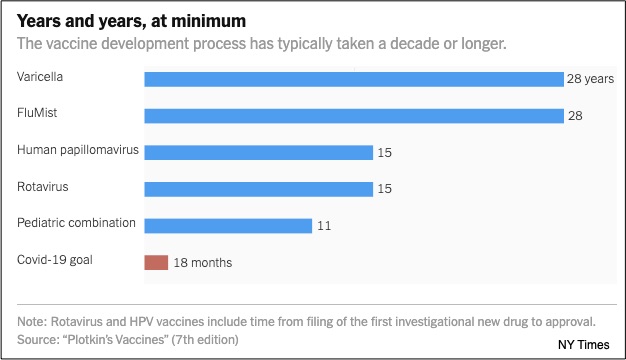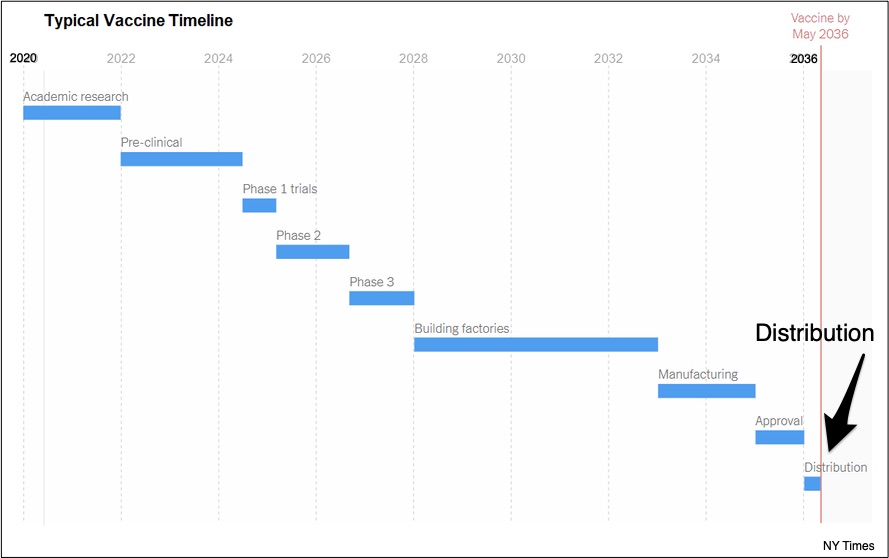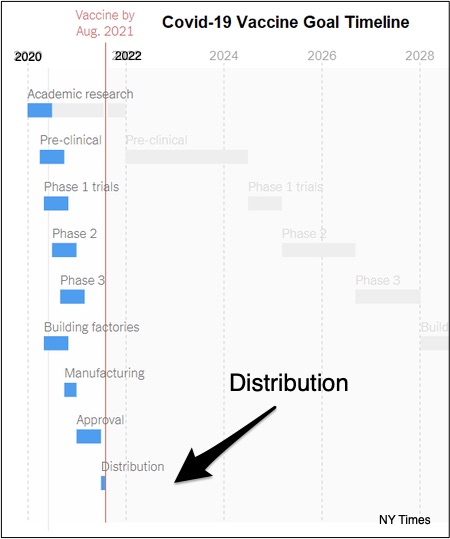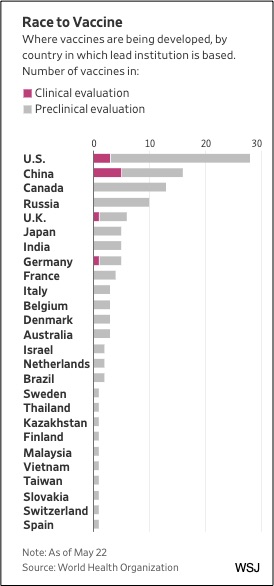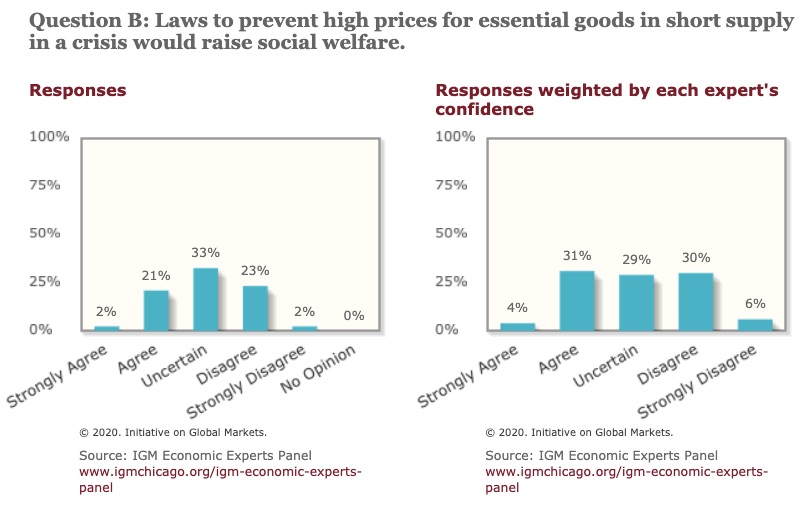When you develop a vaccine, the process takes many years. With the COVID-19 vaccine, we hope to shrink the time down to 18 months.
These vaccines took as long as 28 years to move from research to the market:
Where are we going? From a vaccine timeline to distribution dilemmas.
A COVID-19 Vaccine Timeline
You can see that building factories occupies the most time:
The goal for coronavirus vaccine development is to compress the entire process, If factories are built during Phase 3 trials, then they are ready when needed:
The fast track could work if we are lucky. It will all depend on whether we know enough to bypass the academic research stage because other coronaviruses like SARS resemble COVID-19. Then, other phases could be combined and factory preparation begun now. Still, the complexities and possible glitches are daunting. Just think of the billions of glass vials and stoppers we need. They need to be made, filled, and shipped with sophisticated precision.
Then, even if all unfolds optimally, we need to figure out the best way to distribute the vaccine(s).
Our Bottom Line: Distribution
If we slice away all of the jargon, economics is really just about production and distribution. Economic systems like the market or central planning determine which goods and services will be produced and how a society will create them. The final step is distribution. Deciding who gets what and how much, we have to answer countless questions.
Let’s give it a try for the COVID-19 vaccine.
Vaccine Nationalism
Each of the countries rushing to create their own vaccine could share it with the world or restrict its export. To avoid the constraints of export restrictions, some multinational companies have located their research and development in several countries.
Thus far, 26 countries are racing to find the COVID-19 vaccine:
Prices
The debate here is mostly between the government and the market.
A panel of 41 economists was almost equally divided when asked if society benefits more from government’s price caps or the market’s prices for a “short supply” of essential goods:
If prices dictate distribution, then domestically those who can afford the vaccine, and internationally, the developed world, will have the advantage. However, governments and WHO could mandate a hybrid whereby they purchase the vaccine at market prices and initially give it to healthcare workers. Furthermore, economist Tyler Cowen points out that market prices are a handy way to compare the quality of the multiple vaccines that will emerge and also provide compelling incentives to ramp up production.
Perhaps all of this just leaves us thinking that economics is about so much more than money.
My sources and more: The NY Times timelines were the ideal place to begin for the big picture. Then, Bloomberg and WSJ, and the IGM Forum let me focus on the distribution phase. (Our featured image is from Bloomberg.)

